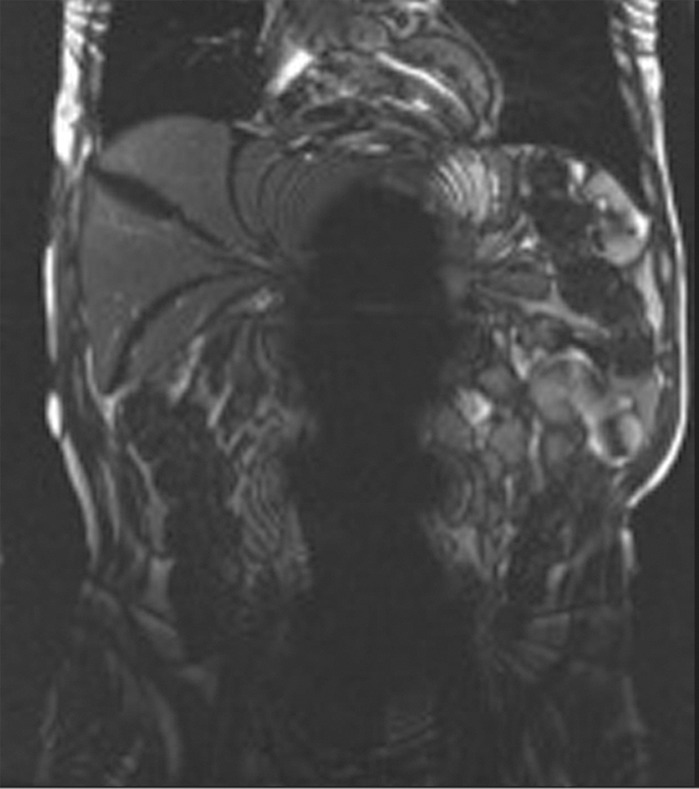Figure 2a.

Susceptibility artifact in a 65-year-old man who had undergone endovascular repair of an abdominal aortic aneurysm. (a, b) Coronal balanced steady-state free precession (SSFP) (a) and axial gradient-echo (b) MR images of the abdomen show marked signal loss (arrow in b) caused by spin dephasing near the metallic aortic stent-graft. (c) Axial T2-weighted MR image of the abdomen was acquired with a fast spin-echo sequence. Both the balanced SSFP sequence used in a, which has T2* and T1 weighting, and the gradient-echo sequence used in b are more sensitive to susceptibility artifacts than the fast spin-echo sequence used in c. Arrow = location of signal loss in b. (d) Kidney, ureter, bladder posteroanterior radiograph shows the metallic components of the aortic stent-graft.
